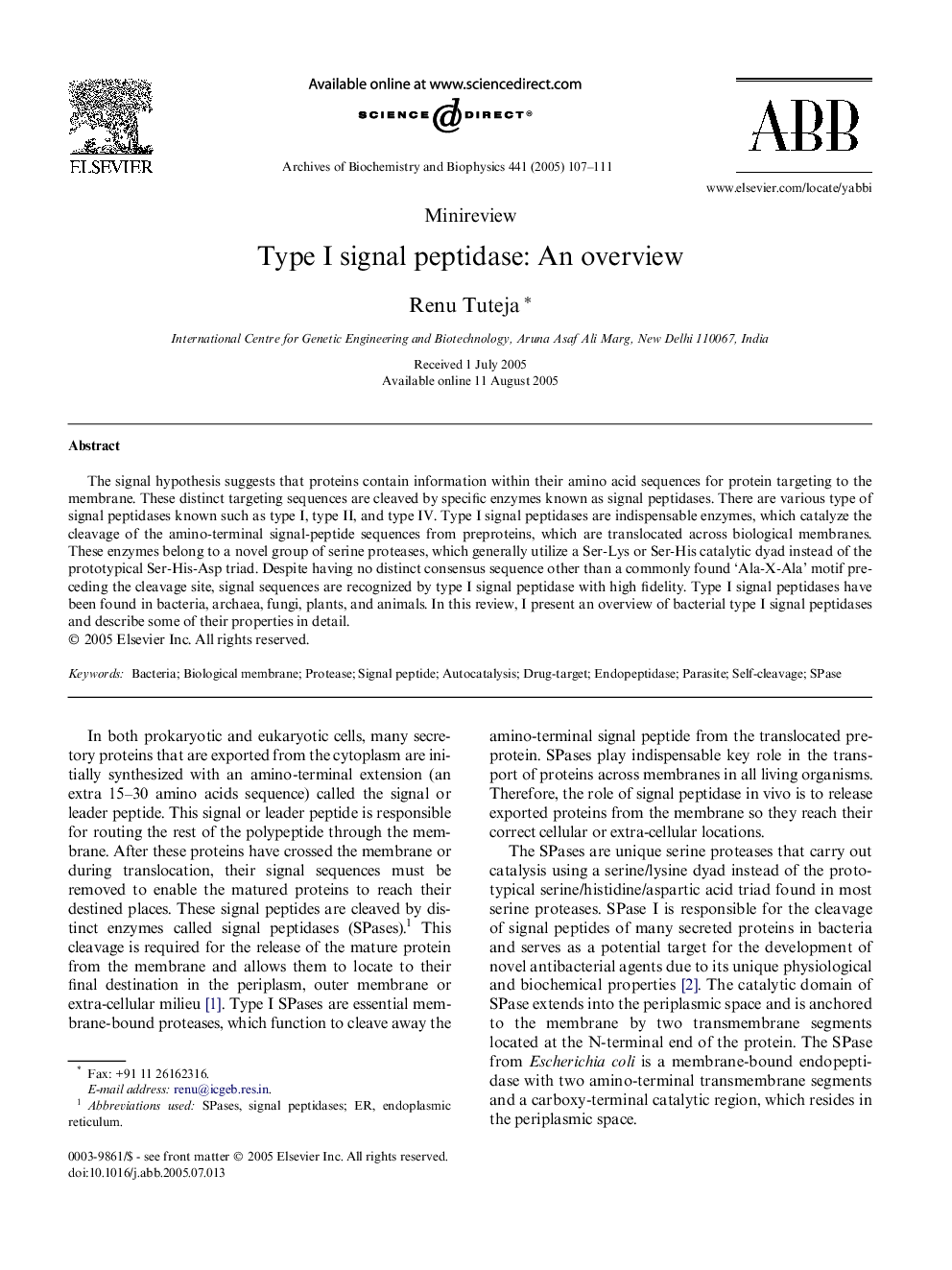| Article ID | Journal | Published Year | Pages | File Type |
|---|---|---|---|---|
| 9882119 | Archives of Biochemistry and Biophysics | 2005 | 5 Pages |
Abstract
The signal hypothesis suggests that proteins contain information within their amino acid sequences for protein targeting to the membrane. These distinct targeting sequences are cleaved by specific enzymes known as signal peptidases. There are various type of signal peptidases known such as type I, type II, and type IV. Type I signal peptidases are indispensable enzymes, which catalyze the cleavage of the amino-terminal signal-peptide sequences from preproteins, which are translocated across biological membranes. These enzymes belong to a novel group of serine proteases, which generally utilize a Ser-Lys or Ser-His catalytic dyad instead of the prototypical Ser-His-Asp triad. Despite having no distinct consensus sequence other than a commonly found 'Ala-X-Ala' motif preceding the cleavage site, signal sequences are recognized by type I signal peptidase with high fidelity. Type I signal peptidases have been found in bacteria, archaea, fungi, plants, and animals. In this review, I present an overview of bacterial type I signal peptidases and describe some of their properties in detail.
Keywords
Related Topics
Life Sciences
Biochemistry, Genetics and Molecular Biology
Biochemistry
Authors
Renu Tuteja,
